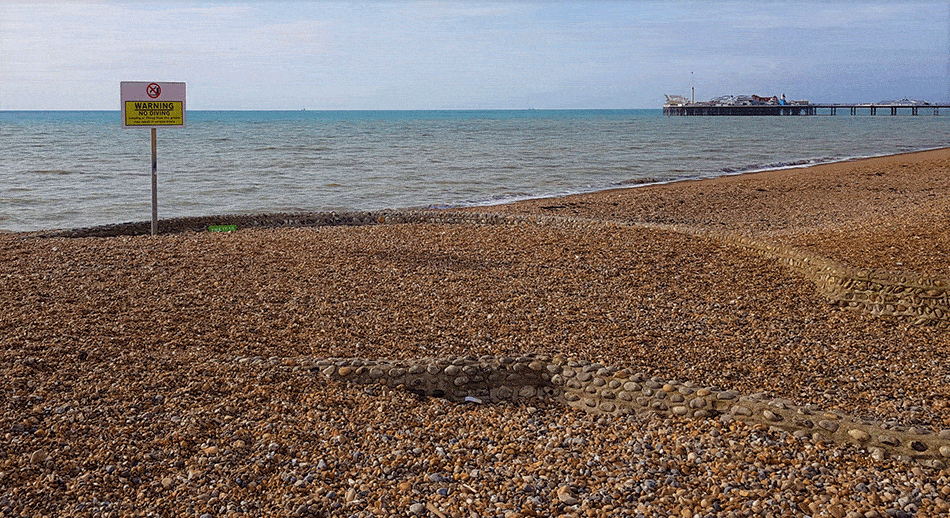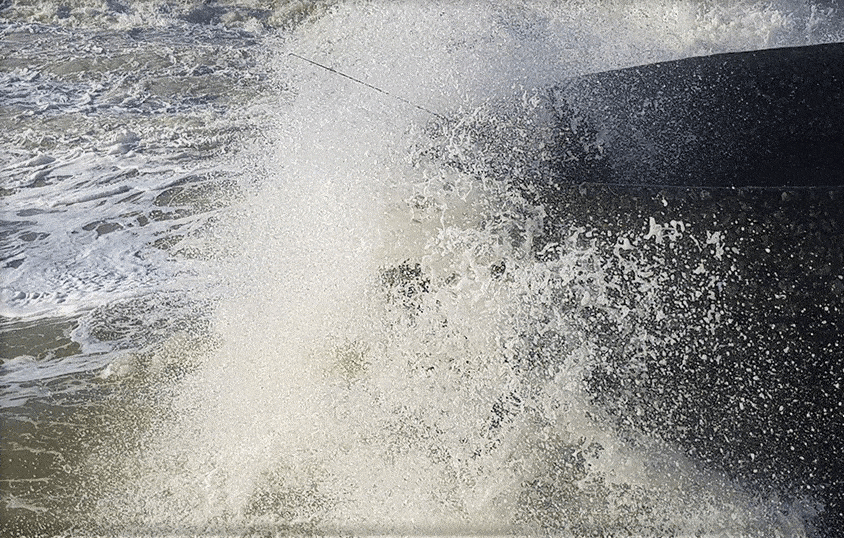You would think that Brighton would be an unlikely place to see floods. That’s because there are no rivers running through the city and while tales of global warming drowning the world’s cities abound, in reality, this hasn’t taken place either.
Has Brighton ever flooded? Yes, in fact, Brighton floods on a regular basis. This is mainly due to surface and groundwater flooding and it can be quite severe. That’s not to say, however, that there are no incidences of seawater flooding on the South Coast, just that they are rarer than you might expect.
So, let’s take a look at what causes flooding in Brighton, where the high-risk areas in Brighton for flooding are, when the most recent incidence of flooding took place and, perhaps, most importantly, what the impact of flooding in Brighton might be for you. Then, finally, we’ll consult our crystal ball and see what the future of flooding in the city may look like.
What Causes Flooding In Brighton?
There are two main causes of flooding in Brighton: groundwater flooding and surface flooding. There are also occasional incidents of seawater flooding though these are much less apparent since Brighton invested heavily in flood defences.
Groundwater Flooding In Brighton
Groundwater is the water table below the ground which serves as a natural aquifer for the city. It floods when the level of water in the table rises above the “normal” level and it escapes into the ground itself.
This is often caused by large amounts of rain being unable to drain naturally because of building/construction over the rock which would allow the rainwater to escape into the groundwater table.
Groundwater flooding is particularly inconvenient when compared to other forms of flooding because it can take longer to abate when rains cease.
The majority of groundwater flooding in Southern England occurs due to “clearwater” flooding which is due to the chalky rock under the surface layer which prevents the easy absorption of rainwater into the groundwater table. Since the year 2000, the UK has seen much more rainfall, and this has had a significant impact on clearwater flooding.
You can check to see if there are groundwater flood warnings for England on the Government’s Flood Information Service online.
Surface Flooding In Brighton
Surface flooding is all down to man-made issues. In essence, it occurs when the drainage systems in place in cities are inadequate to deal with periods of heavy rain.
This isn’t necessarily due to neglect or poor urban planning – there are good reasons that drainage systems are not designed for flood conditions (because in “normal” conditions this can prevent water from flowing effectively around the system – which would create other problems for the city).
The good news is that surface flooding tends to be very temporary in nature. The drainage systems will eventually catch up with the volumes of water and distribute them elsewhere. So, you may find that a street ends up with a massive 1-inch deep puddle for an hour or two in the aftermath of rain, but it’s gone before the end of the day.
The bad news is that it is nearly impossible to forecast surface flooding because it is difficult for the Met Office to accurately predict the severity of rainfall in any given specific location.
However, despite this, the best information available on this kind of flooding is going to be the Met Office’s weather forecasts.
Seawater Flooding
In the main city of Brighton, seawater flooding is much less of a risk than it once was thanks to concerted efforts to build effective flood defences. However, Rottingdean to the East and Shoreham and Portslade to the West are both at substantial risk of flooding from seawater.
Your best bet for checking flood risks from the sea is to consult the Environment Agency’s 5-day flood forecasts online.
What Are The High-Risk Areas For Flooding In Brighton?
Get The Data maintains a very specific map which enables you to determine the high-risk areas for Brighton when it comes to flooding.
The good news is that there are very few high-risk areas for flooding in Brighton and, in fact, in the city of Brighton there’s only a small part of the BN2 postcode which is affected. However, if you’re thinking about staying in or living in the village of Rottingdean further down the coast much of that area is High-Medium risk for flooding as the area lacks the sea defences of the main city.
There are some low-risk postcodes in BN41 too which is in the Aldrington area.
When Was The Last Serious Incidence Of Flooding In Brighton?

The last incidence of flooding to affect Brighton, at the time of writing (January 3rd, 2020), was on the 20th of December, 2019. This flooding wasn’t actually in Brighton; however, it was further inland when surface flooding contributed to the flooding of the railway service between Brighton and London.
And a flood alert was issued on the 27th of December, 2019, though in the end, this was not a serious issue.
However, YouTuber PewDiePie would say that the most serious recent incident of flooding in Brighton came on the 28th of November 2019 when a savage downpour not only flooded out their neighbourhood but caused sewage to leak from their neighbour’s home into their garden!
What Was The Most Severe Incidence Of Flooding In Brighton?
The most serious flood to hit Brighton was the flood of 1953, known as the North Sea Flood. It was a combination of severe weather conditions (a high tide, a windstorm and a storm tide) which created conditions which battered the UK and much of the continent too.
Nearly 2,000 people died in Belgium and the Netherlands and in the UK more than 300 people died. While the impact was not at its most severe in Brighton, it was this event which gave the British government the incentive it needed to invest in proper flood defences for most of the South Coast.
It is the main reason that there have been no severe flooding issues in Brighton since.
How Could Flooding In Brighton Affect Me?
In most cases, visitors to the city are unlikely to be affected by flooding, most flooding takes place in the Winter months when visitor numbers are at their lowest. However, it is possible that you might get caught in a flood if you’re there in the Winter or if you move to the city.
If that’s the case – the only real risks are potential health risks. You’re not likely to see your home or your car swept out to sea because flooding in Brighton isn’t that severe. If you do find yourself caught in floods you should remember these tips when dealing with floodwater:
- Make sure to wear rubber gloves when touching floodwater. Surface water isn’t clean, and it may cause skin irritation.
- Wash down any contaminated surfaces using hot water and some soap or liquid soap.
- Once they’ve been washed, you should wipe each surface with a solution of bleach (one-part bleach to ten parts cold water) to sterilize them
- Always wash your hands if they’ve been in contact with floodwater and especially before you eat.
- If you find yourself feeling sick, please consult a physician or your GP immediately.
- Let pools of water dry naturally, then clean and disinfect the area.
- If your taps are contaminated with floodwater, then you should soak them in a bleach solution (again one-part bleach to ten parts cold water) and then run the tap to flush it before you use it.
One thing you should be aware of is that the local authority will only provide sandbags in an emergency situation where there is an imminent risk of flood. Otherwise, you’re responsible for your own flood defences in Brighton.
Future Flooding Risks In Brighton
The biggest future flooding risk for Brighton appears to be climate change. Dr. Raymond Ward speaking at Brighton University said that “Climate change is exceptionally serious in the south-east. If you get a big storm surge and the sea level is higher, it could overwhelm our current defences.”
While the precise impact of climate change on Brighton’s flood defences is not, yet, know there’s no doubt that the city may be in danger from rising sea levels in the coming decades. It would be reasonable, however, to assume that as these changes are better understood, the government and local authorities will begin to implement mitigation methods too.
Conclusion
Has Brighton ever flooded? Yes, it has, and it will continue to do so. Mainly, this is due to groundwater and surface water flooding and not due to seawater. However, it is possible that in the years to come – climate change will make the risks of seawater flooding, increase.


